My wife likes to chide me for my ability to generate bad ideas. When I told her I was going to squeeze in one last bikepacking trip to the high peaks of Colorado just as winter storms are likely to crush my route—I realized she might have a point. The truth is, I love the shoulder seasons and the precise moment when the calm of autumn is abruptly ended by the harsh brutality of early winter. I also frequently toy with the idea that I can neutralize bad weather with good gear. Usually, I can.
For this trip, I had a secondary agenda. I have always been a fan of products from Seattle-based brands MSR, Therm-a-Rest, Seal Line, and Platypus. The more of their products I use, the more I trust in their security and comfort. As I laid out all of my vital pieces on my living room floor, I was determined to take only items wearing those labels. It’s not hard to do as they make killer products and lots of it. To take it a step further, virtually everything I packed was brand new, as in not available to dealers until January. That, in itself, was exciting.
MSR Hubba Tour 1
 I have used the Hubba series of MSR shelters for years. From the depths of the Grand Canyon to the volcanic deserts of the Icelandic Highlands they have served me well. The newest tent in the line is the 2018 Hubba Tour. Available in one-, two-, and three-person models, I elected to take the soloist shelter. With the portent of a gnarly storm a genuine concern, the massive vestibule and full coverage rainfly made this a safe bet.
I have used the Hubba series of MSR shelters for years. From the depths of the Grand Canyon to the volcanic deserts of the Icelandic Highlands they have served me well. The newest tent in the line is the 2018 Hubba Tour. Available in one-, two-, and three-person models, I elected to take the soloist shelter. With the portent of a gnarly storm a genuine concern, the massive vestibule and full coverage rainfly made this a safe bet.
As I knew it would, the weather found me, and by sunset on the first night snow and sleet had moved in. Not that it mattered. I was cozy and sprawled out within the 21 square feet of space of my sleeping quarters. Just beyond the door was an additional 25 square feet of cavernous vestibule space held aloft with its own dedicated arched pole, covered with a partial nylon floor section to keep my essentials off the wet ground.
Adding to its weatherproofness, the Hubba Tour’s structure is provided by poles placed on the outer aspect of the rainfly. At no point during pitch or takedown was the inner tent canopy exposed to the elements. Shrouded vents at the head, foot, and peak of the rainfly kept condensation to a minimum with the small amount of moisture each morning quickly mopped up with a quick pass of a PackTowl. The consummate organizer that I am, I immediately fell in love with the many pockets, gear lofts, and attachment points throughout the living quarters. The covered floorspace in the vestibule made for the perfect place to sort my items and ready myself for a wet morning pack-up.
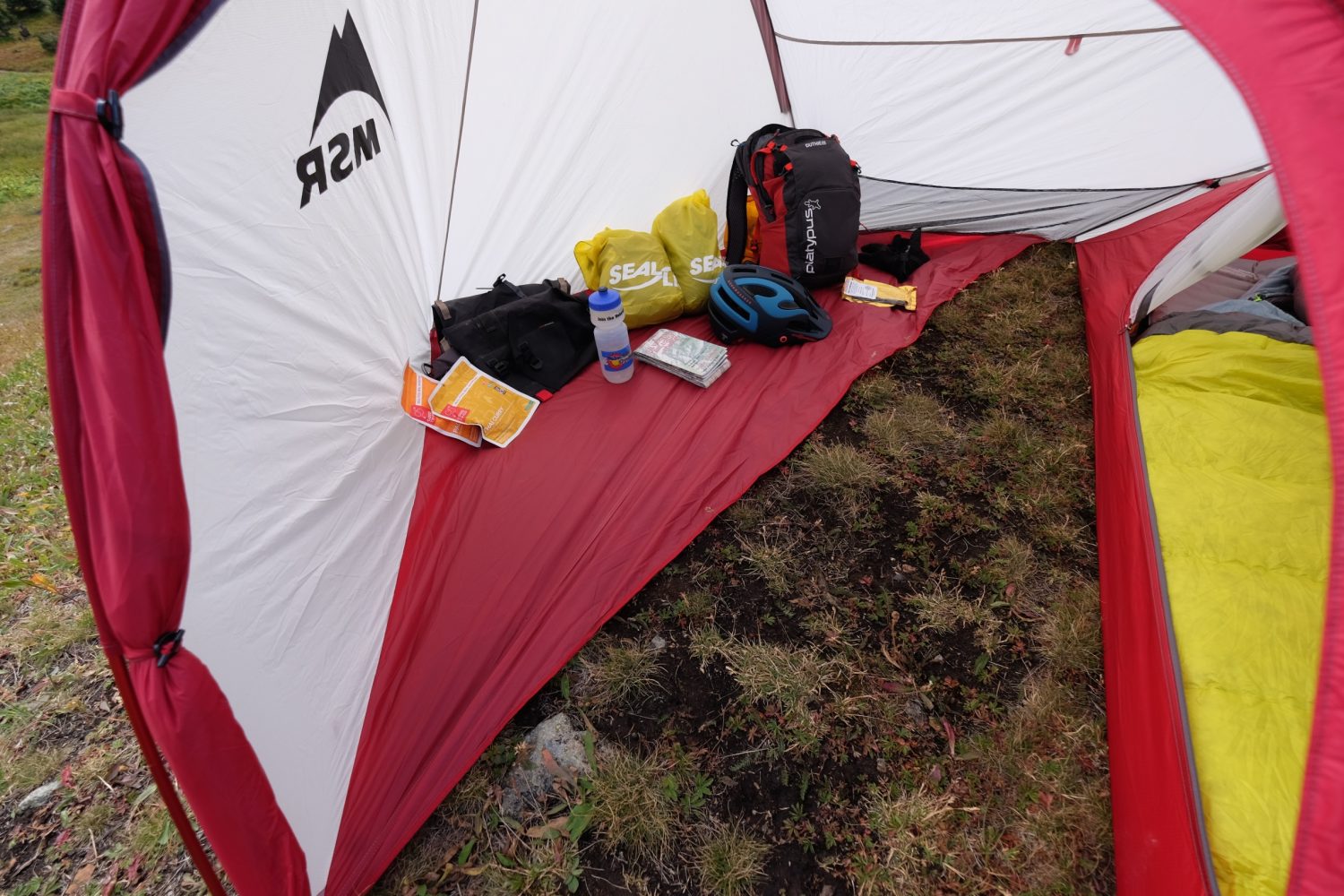 Given its enormity for a lone camper, the small packed size is scarcely larger than a loaf of bread, and the 3-pound, 14-ounce trail weight slides the Tour 1 into a category I would classify as ultra-light. MSR showed restraint with material selections and while they went light, they didn’t go so thin the Tour wouldn’t endure a protracted journey.
Given its enormity for a lone camper, the small packed size is scarcely larger than a loaf of bread, and the 3-pound, 14-ounce trail weight slides the Tour 1 into a category I would classify as ultra-light. MSR showed restraint with material selections and while they went light, they didn’t go so thin the Tour wouldn’t endure a protracted journey.
During my first night, I spent more than 14 hours in the Tour waiting out a nasty squall. The wind did it’s best to knock me around, but the tent was steadfast. To break up the monotony of a long hideout from the rain, I moved between the floor of the vestibule and the sleeping area, not for a minute feeling cramped or confined.
Therm-a-Rest Space Cowboy 45
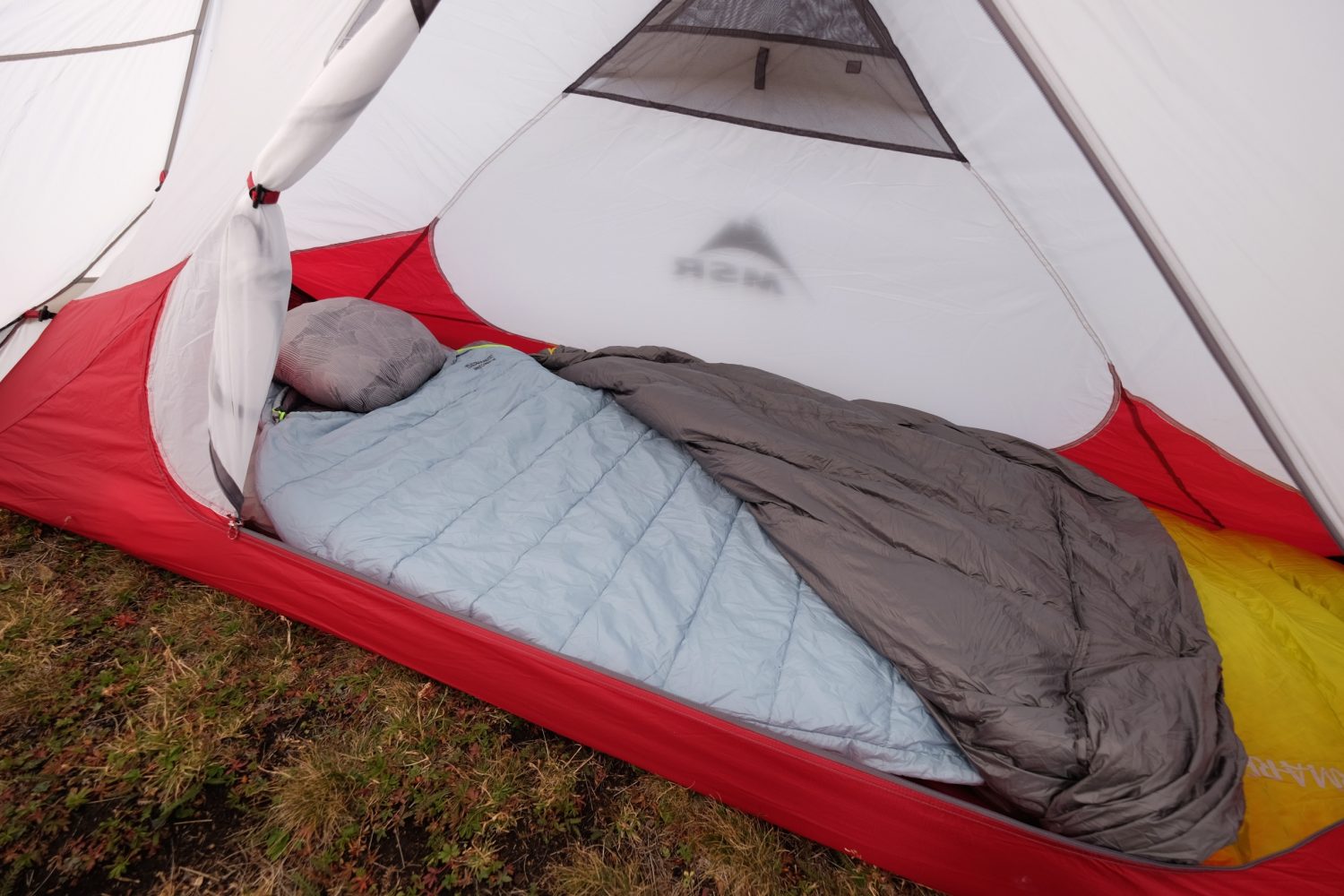 Another product slated for 2018 release, the Space Cowboy is a traditional sleeping bag aimed at the ultra-light traveler. At 1 pound, 3 ounces for the size regular bag, it packs into a tiny ball thanks to the use of warm but compressible eraLoft synthetic insulation. Dual SynergyLink Connectors on the underside keep the bag located squarely on the pad ensuring I don’t roll off mid-slumber.
Another product slated for 2018 release, the Space Cowboy is a traditional sleeping bag aimed at the ultra-light traveler. At 1 pound, 3 ounces for the size regular bag, it packs into a tiny ball thanks to the use of warm but compressible eraLoft synthetic insulation. Dual SynergyLink Connectors on the underside keep the bag located squarely on the pad ensuring I don’t roll off mid-slumber.
With a mild 45ºF temperature rating, the Space Cowboy wasn’t warm enough for the temps I expected. I could have brought my much-loved Therm-a-Rest Altair HD bag, but I wanted more versatility for the varied temps I knew I would encounter as I moved higher and lower in the peaks.
Therm-a-Rest Corus Quilt 35
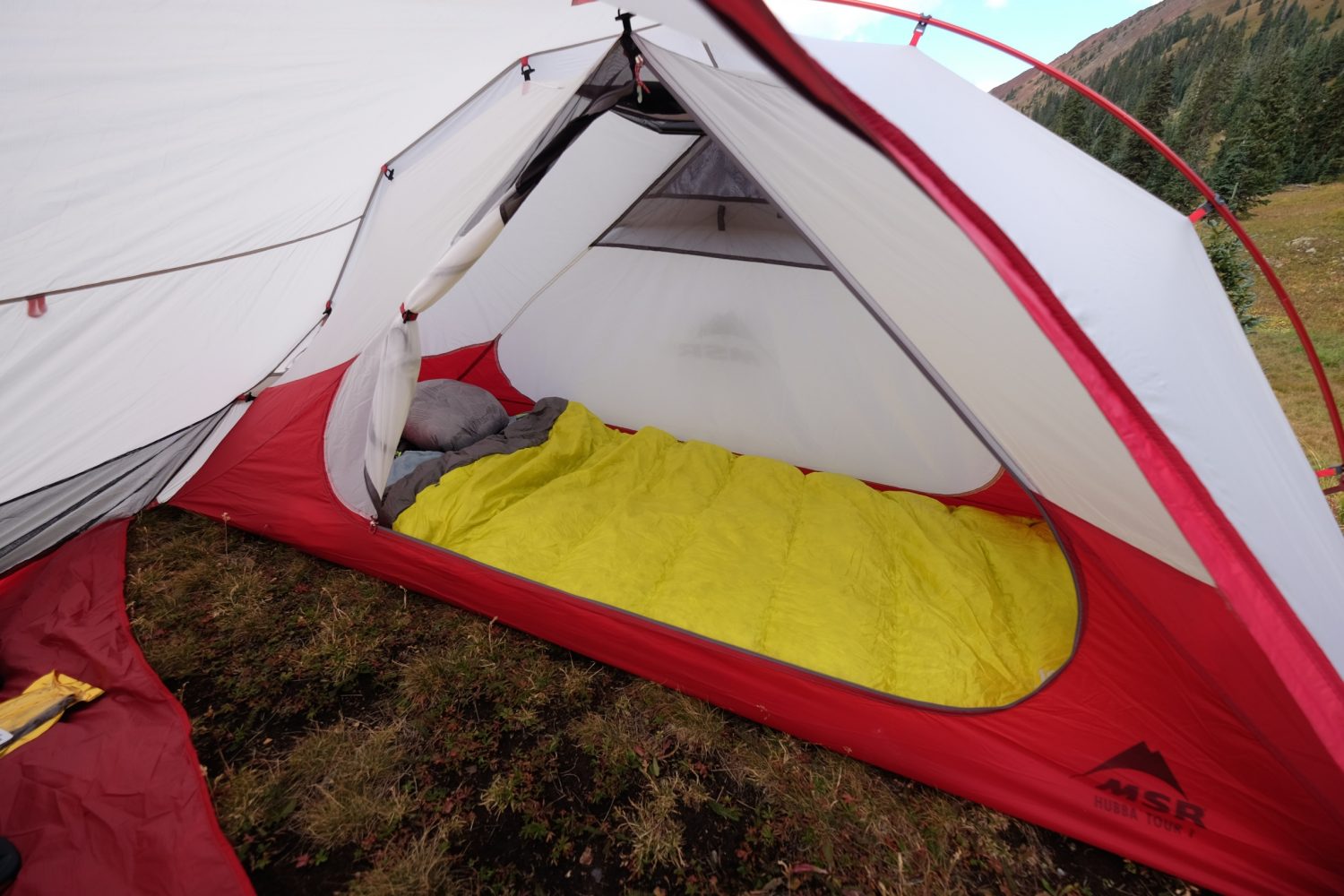 I spent much of the last year testing non-traditional sleeping solutions for Overland Journal’s 2018 Winter issue. Through that process, it was made clear to me that no other brand is as innovative with their various sleeping systems as Therm-a-Rest. Knowing I might encounter a mix of temperatures I elected to pack the bantam weight Corus Quilt 35 as my primary insulator. Filled with Nikwax 650-fill hydrophobic down, it packs small and weighs just a shade under a pound and a half. On its own, it can keep me warm to temps pushing down to the frost point. Since I had no intention of being cold I paired it with the Space Cowboy for a smart two-piece system.
I spent much of the last year testing non-traditional sleeping solutions for Overland Journal’s 2018 Winter issue. Through that process, it was made clear to me that no other brand is as innovative with their various sleeping systems as Therm-a-Rest. Knowing I might encounter a mix of temperatures I elected to pack the bantam weight Corus Quilt 35 as my primary insulator. Filled with Nikwax 650-fill hydrophobic down, it packs small and weighs just a shade under a pound and a half. On its own, it can keep me warm to temps pushing down to the frost point. Since I had no intention of being cold I paired it with the Space Cowboy for a smart two-piece system.
The Corus has a couple of slick tricks other quilts miss, namely a perimeter draft skirt and an elasticized pocket which wraps around the base of the sleeping pad. This allows me to draw the quilt toward my face without inadvertently causing my feet to pop out the other end. An additional baffle at the neck, coupled with an elasticized cord, keeps warm air from slipping out the top. Cut wide enough to pair to my 25-inch pad, it’s more like sleeping in a bed than a bag.
When my partners at Therm-a-Rest suggested the Space Cowboy and Corus combo, I didn’t quite see the logic in it. After several nights with the pair, I’m not likely to use anything else. In a traditional bag if I get hot, I have to unzip the bag creating an all-or-nothing change to my temperature. With the Corus over the Space Cowboy, regulating temperature is as easy as sliding the quilt up or down, just as I do my comforter at home. It’s sleepy bliss. The Space Cowboy also helps keep my legs from slipping off the pad and out from under the Corus. On warm nights at lower elevations, I just left the Corus in the stuff sack or used it as a thick woobie while mugging around camp.
Therm-a-Rest NeoAir XTherm Max SV
I’m a vocal advocate of the NeoAir pad in its many forms, but the extra wide and long XTherm with its bolstered 5.7 R-value is my cold weather go-to. The extra real estate ensures cold drafts don’t creep up from around me and the ThermaCapture heat-reflective layers inside the pad provide a reliable barrier insulating me from the cold ground.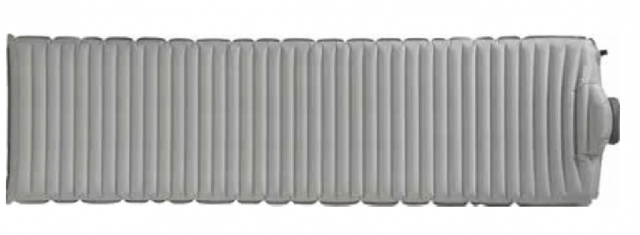
For 2018, the XTherm Max gets a significant upgrade with the introduction of Therm-a-Rest’s unusual but effective SpeedValve. I’ll spare you the science behind it, but suffice it to say, with practice the new valve has the pad inflated and deflated with relative ease—and speed. For the sake of full disclosure, the first time you use it, you’ll probably hate it. Give it time and practice. As the pad gets used a few times, the inflation becomes much easier. At 1 pound, 7 ounces, it’s even respectfully light. Twice as heavy as the lightest pad in my quiver, it’s nonetheless the pad to have when sleeping through a nasty storm.
Rounding out my system is Therm-a-Rest’s amazing down pillow. When stuffed with my down jacket for added pillow power, it makes for the best head-bed I’ve ever used in the backcountry. Sublime is the word I’d use.
MSR Pocket Rocket 2 Mini Stove Kit
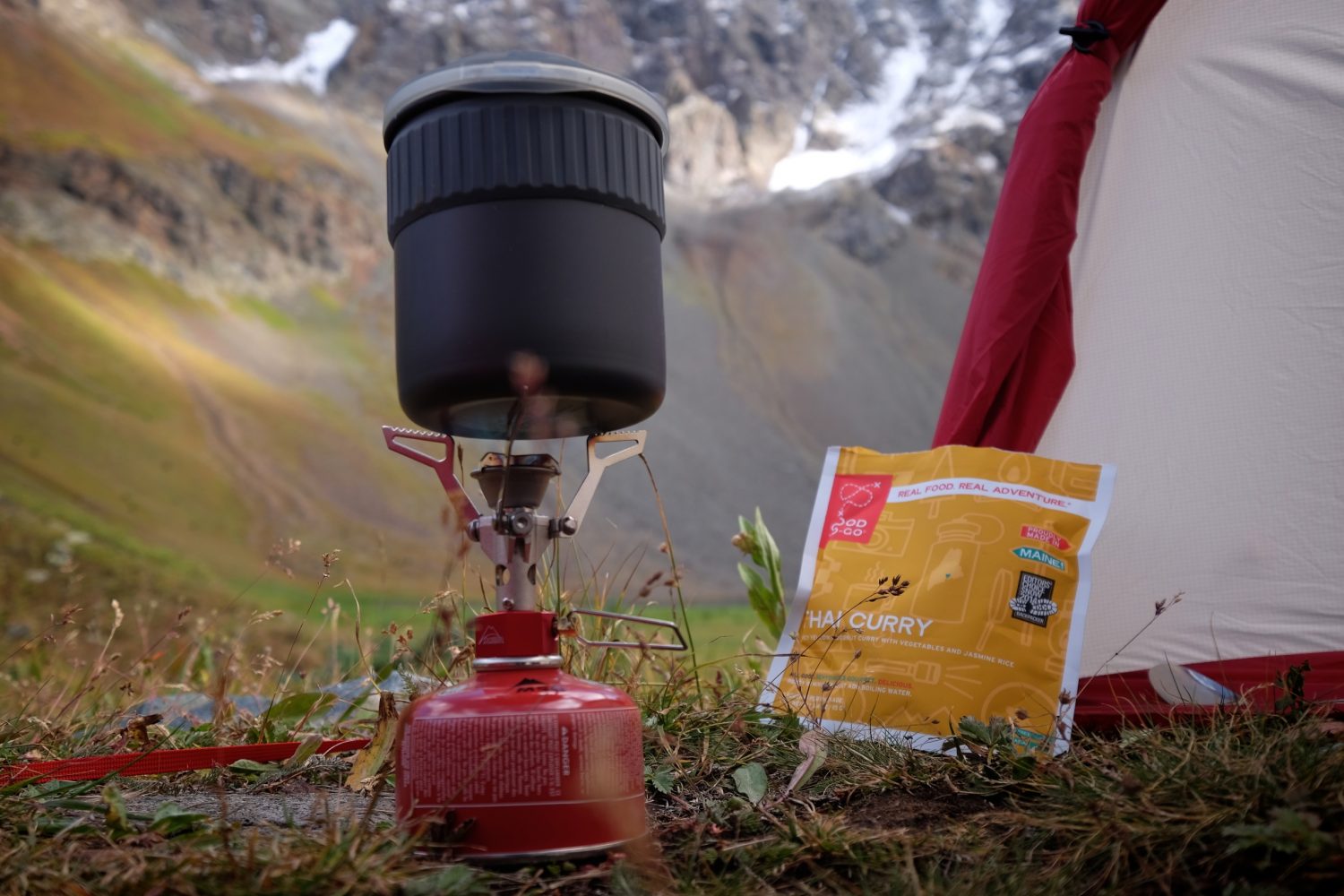 Another item new for 2018, this all-in-one kit is perfect for the soloist. At the center of the system is MSR’s updated classic: the Pocket Rocket 2 folding stove. Simple, small, light, and reliable, it’s also quite a little scorcher and can have 1/2 liter of water boiling in under 3 minutes. The system includes the stove, .75-liter anodized aluminum pot, plastic cup, lid, and pot lifter. I find I don’t often use the pot lifter as the pot includes a bonded rubber ring which I can use to handle the vessel, even while hot.
Another item new for 2018, this all-in-one kit is perfect for the soloist. At the center of the system is MSR’s updated classic: the Pocket Rocket 2 folding stove. Simple, small, light, and reliable, it’s also quite a little scorcher and can have 1/2 liter of water boiling in under 3 minutes. The system includes the stove, .75-liter anodized aluminum pot, plastic cup, lid, and pot lifter. I find I don’t often use the pot lifter as the pot includes a bonded rubber ring which I can use to handle the vessel, even while hot.
For the ultimate in uber-light, the plastic cup and lid can be mated together to create a camp mug or bowl that weighs mere grams. It is a tad hot to handle, but a wool glove makes that a none issue. Sized to fit a 4-ounce MSR isobutane/propane fuel canister as well as the stove, lifter, and a lighter, it’s a tight little system with a fast and efficient burn.
MSR Stainless Steel Mug
I’ve owned many of these mugs. They keep walking away from me anytime I camp with friends. Not to say anyone is stealing my mugs, but those fools keep stealing my mugs. I don’t blame them. They weigh mere grams and their unique shape allows them to nest within the various MSR pot sets. Naturally, every good cup needs a spoon, so I use the MSR Alpine Long Tool Spoon. Made of stainless steel and fitted with inset tool bits in the handle to service MSR stoves, it’s my weapon of choice when stirring my dinner within a deep food pouch.
MSR TrailShot Water Filter
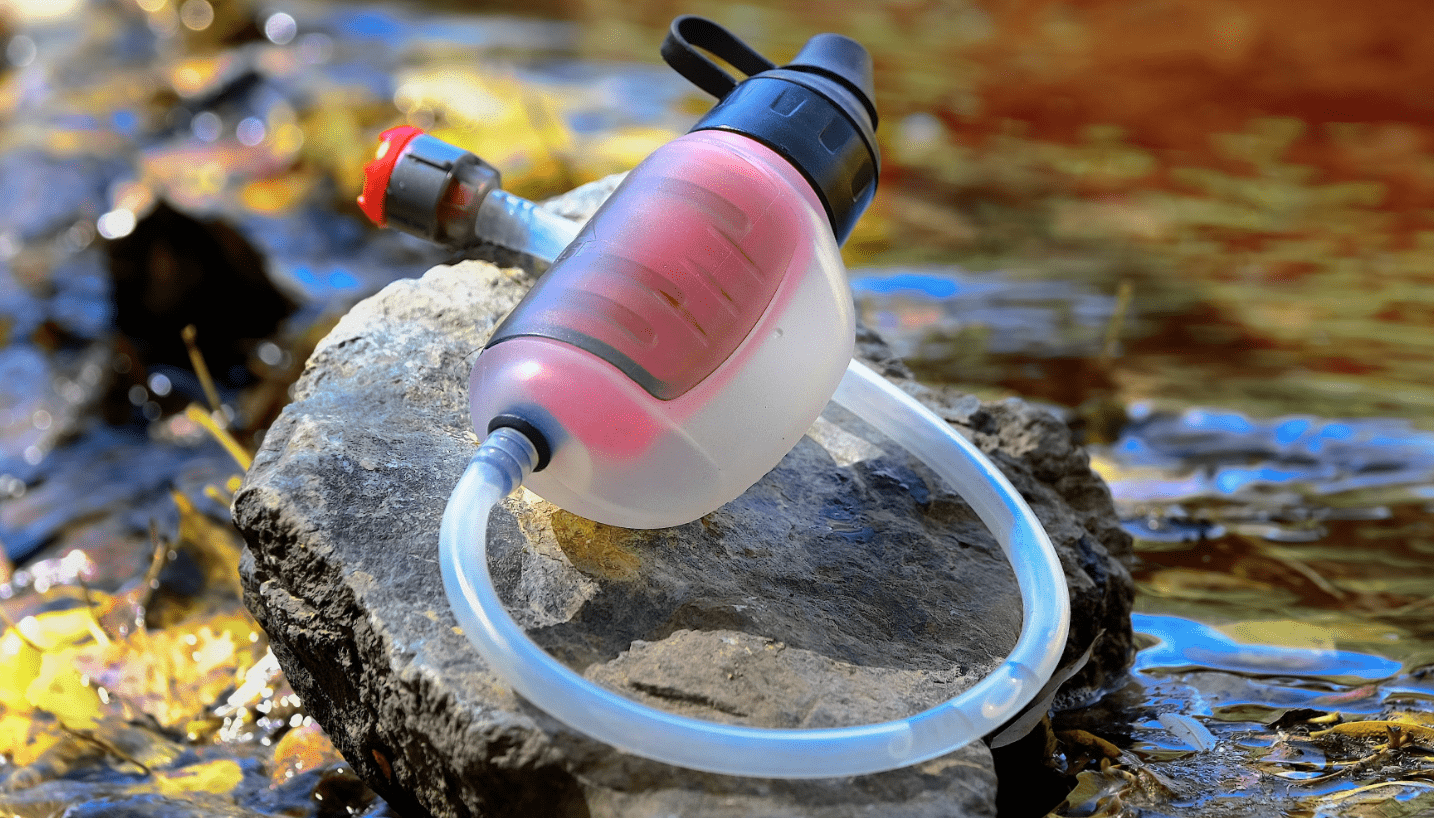 For a trip into the high reaches of the Rockies, particularly on the end of a wet few weeks, water was not an issue. Streams, puddles, and lakes were around every bend, so I didn’t need a means to process large volumes of water, only quick fill-ups as needed. The TrailShot is almost always in my riding pack and for good reason. Within seconds, I can have it primed and pumping. Read my full review of the TrailShot [HERE].
For a trip into the high reaches of the Rockies, particularly on the end of a wet few weeks, water was not an issue. Streams, puddles, and lakes were around every bend, so I didn’t need a means to process large volumes of water, only quick fill-ups as needed. The TrailShot is almost always in my riding pack and for good reason. Within seconds, I can have it primed and pumping. Read my full review of the TrailShot [HERE].
Platypus Duthie A.M. 15 Hydration Pack
 In my closet lurks a box of misfit toys. Crammed full of hydration packs I’ve tried over the last few years, none of them hold a candle to the Platypus Duthie. Although rather small for bikepacking purposes, the 15 liters of storage in the Duthie is sufficient enough to hold my Fuji DLSR and even my DJI Mavic drone. What I love most about the Duthie is the mesh back panel for maximum air flow. The high volume hip pockets ensure my essentials are always close by and the Big Zip reservoir holds 3 liters of water and snaps into the hydration pocket with two brilliant little clips. No more fussing with velcro or buckles.
In my closet lurks a box of misfit toys. Crammed full of hydration packs I’ve tried over the last few years, none of them hold a candle to the Platypus Duthie. Although rather small for bikepacking purposes, the 15 liters of storage in the Duthie is sufficient enough to hold my Fuji DLSR and even my DJI Mavic drone. What I love most about the Duthie is the mesh back panel for maximum air flow. The high volume hip pockets ensure my essentials are always close by and the Big Zip reservoir holds 3 liters of water and snaps into the hydration pocket with two brilliant little clips. No more fussing with velcro or buckles.
Gear Storage
 In my efforts to not carry more bulk than I need to, I tend to leave stuff sacks at home. Last summer, I was given a few new 2018 Seal Line organizers to try, and I think I might go back to toting more little bags on every trip. My favorites of the bunch are the new Seal Line Blocker Zip and Cinch Sacks. Available in multiple sizes and colors, they’re made of lightweight nylon with welded seams. That’s not a small detail, as welds not only seal against water leaks, they’re more durable than conventional stitched seams. The Blocker Zip Sack in the large size has become my preferred storage sack for hauling my DJI Mavic Drone into the bush. Wrapped in a PackTowl for padding, and safe from water thanks to the sealed seams and water-resistant zipper, it’s a great lightweight case for my expensive toys.
In my efforts to not carry more bulk than I need to, I tend to leave stuff sacks at home. Last summer, I was given a few new 2018 Seal Line organizers to try, and I think I might go back to toting more little bags on every trip. My favorites of the bunch are the new Seal Line Blocker Zip and Cinch Sacks. Available in multiple sizes and colors, they’re made of lightweight nylon with welded seams. That’s not a small detail, as welds not only seal against water leaks, they’re more durable than conventional stitched seams. The Blocker Zip Sack in the large size has become my preferred storage sack for hauling my DJI Mavic Drone into the bush. Wrapped in a PackTowl for padding, and safe from water thanks to the sealed seams and water-resistant zipper, it’s a great lightweight case for my expensive toys.
 The Wrap-up
The Wrap-up
It was fun to head into the mountains equipped with only items from MSR, Therm-a-Rest, Seal Line, Platypus, and PackTowl. From my shelter to my spoon, everything worked perfectly. It might have been a bit more luxurious than my normal mode of travel, but one thing is certain—it will be my norm going forward.


